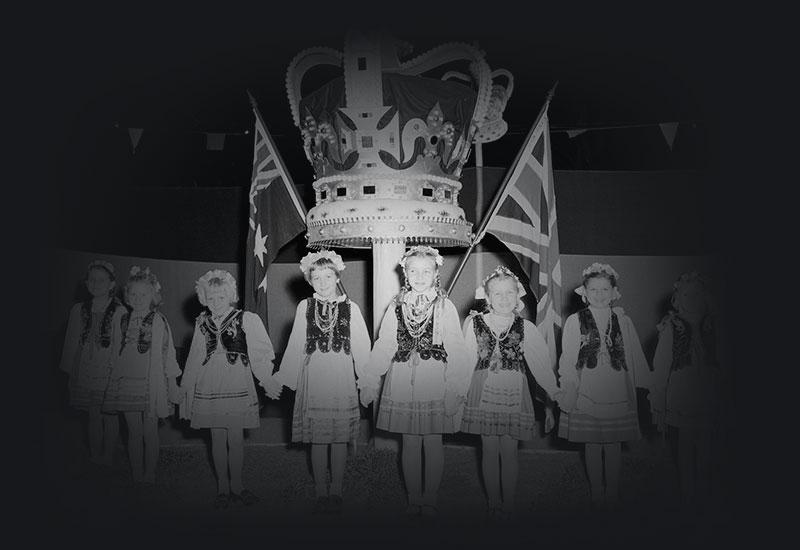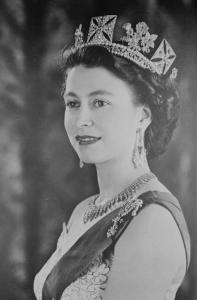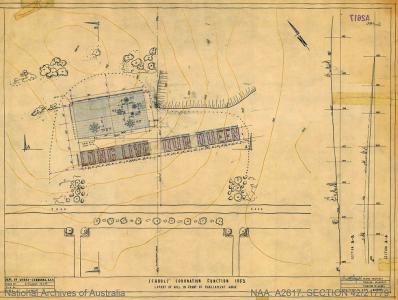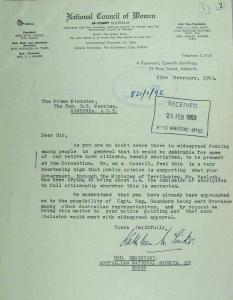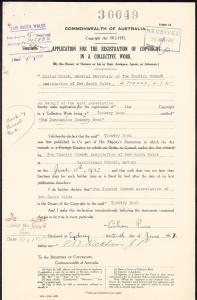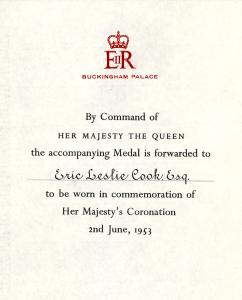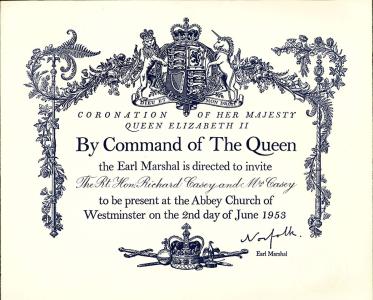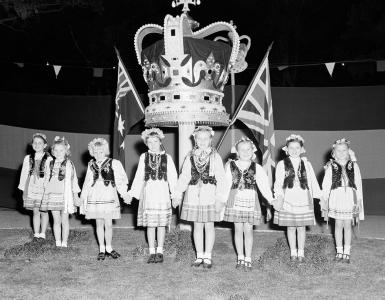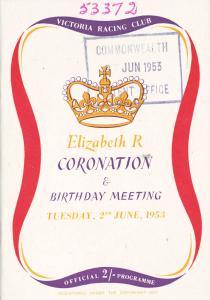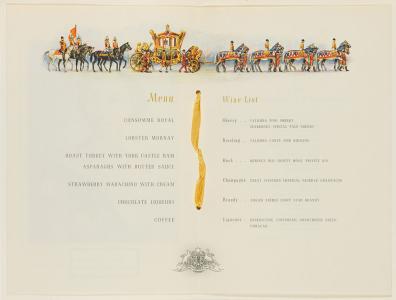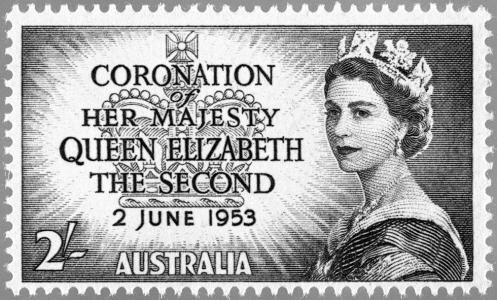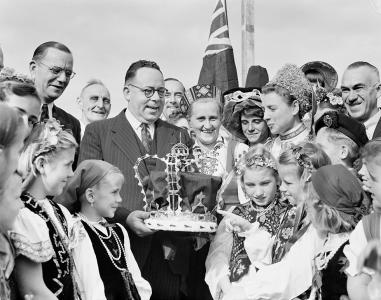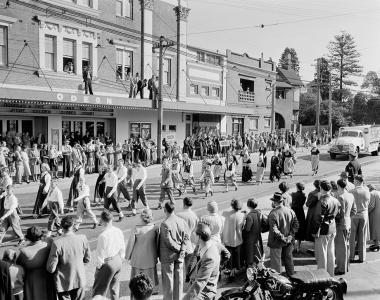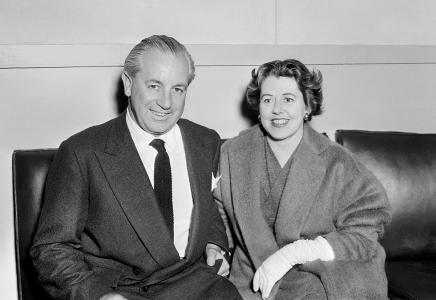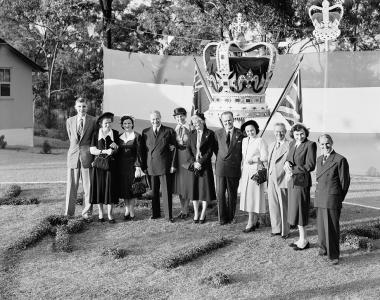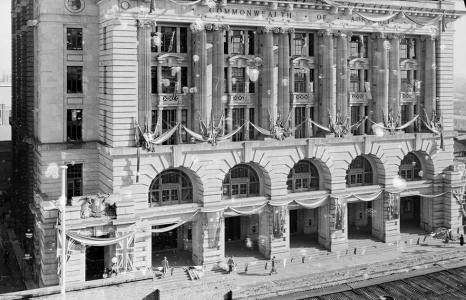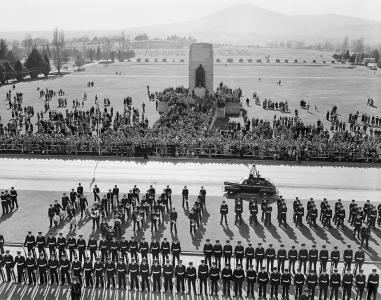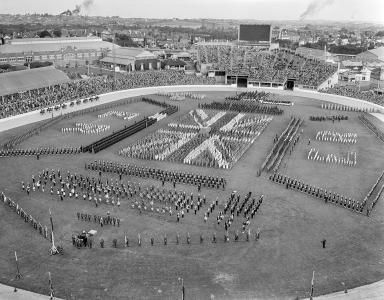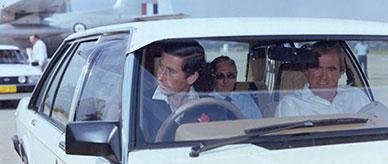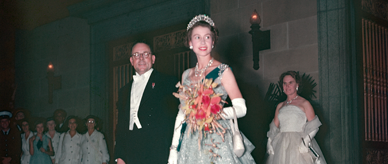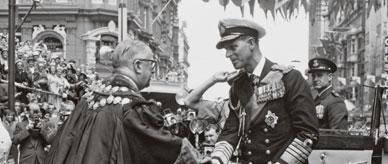King Charles III's coronation is the first in 70 years. On this historic occasion, National Archives looks at how his mother's coronation was marked back in 1953.
Community spirit
Queen Elizabeth II's coronation was as eagerly awaited in Australia as in Britain. The media reported 'coronation fever' gripped communities across the country. Streets and buildings were decorated and lit-up at night.
Coronation Day (June 2) was a public holiday. People celebrated at parades, pageants, prayer services, balls and fireworks displays. In typically Australian fashion, coronation race meetings were also run. Given her love of horses, perhaps these would have impressed the Queen most!
Over 11,000 Australians received the Queen's coronation medal in recognition of their public, military and community service.
Vice-regal levee and a state banquet
In Canberra, thousands gathered at Parliament House. There, the celebrations included speeches by dignitaries, the national anthem, a 21-gun salute and RAAF flypast. On nearby Capital Hill, 3,000 school students assembled. Holding crepe paper banners, they formed a large Australian flag together with the words 'Long live our Queen'.
Afterwards, a special vice-regal levee was held. Men (but not women) could pay their respects to the Queen by shaking the Governor General's hand. The queue stretched around Parliament House. Apparently, the Governor General shook 15 people's hands per minute.
At a state banquet, guests dined on five courses, including consommé royal, lobster mornay and roast turkey. Australian champagne on the wine list was presumably reserved for toasting the newly crowned Queen's health!
Cookery books and souvenirs
For more modest celebrations at home, Australians could always turn to the Country Womens Association's Coronation Cookery Book for inspiration. This best-seller was first published for King George VI's coronation in 1937 and later reprinted several times.
Souvenir teacups, plates, spoons, even ash trays soon graced many Australian homes. Philatelists eagerly snapped up commemorative postage stamps.
On the wireless and in London
With television not yet introduced in Australia, Australians tuned into a broadcast of the coronation ceremony on their radios. News reels and films were later shown in the cinemas.
Thousands of Australians travelled to London to experience the pageantry live on London's streets. Some Australian dignitaries and community representatives received official invitations to attend the ceremony inside Westminster Abbey. The elaborately designed invitations incorporated floral symbols representing the Queen's realms, including wattle for Australia.
An Australian military contingent was also selected to participate in the coronation parade in London. However, a campaign to have Lieutenant Reg Saunders, the first indigenous Australian army officer, included in the contingent was unsuccessful.
Gifts fit for a queen
Australia joined with other Commonwealth nations to present the Queen with 2 gold armills (bracelets). Symbols of sincerity and wisdom, these were placed on the Queen's wrists during the coronation.
Funds were raised from the public for another gift. Suggestions included a large sapphire and even an outback property. At the Queen's request, the funds raised were ultimately used to support maternal health services and research across Australia.
A changing Australia
The 1953 coronation festivities celebrated Australia's still predominately British heritage and strong imperial ties. However, post-war Australia was changing.
A sign of this was the special efforts made to include 'new Australians' in the celebrations. This reflected assimilationist attitudes towards migrants. Unintentionally, such efforts also prefigured a more multicultural future for Australia: one in which the monarchy has become more distant and less relevant to Australians' lives.
As a major international event, large numbers of Australians will still tune in to watch King Charles' coronation. Yet, for some there may not be the same sense of personal connection that was felt back in 1953.

